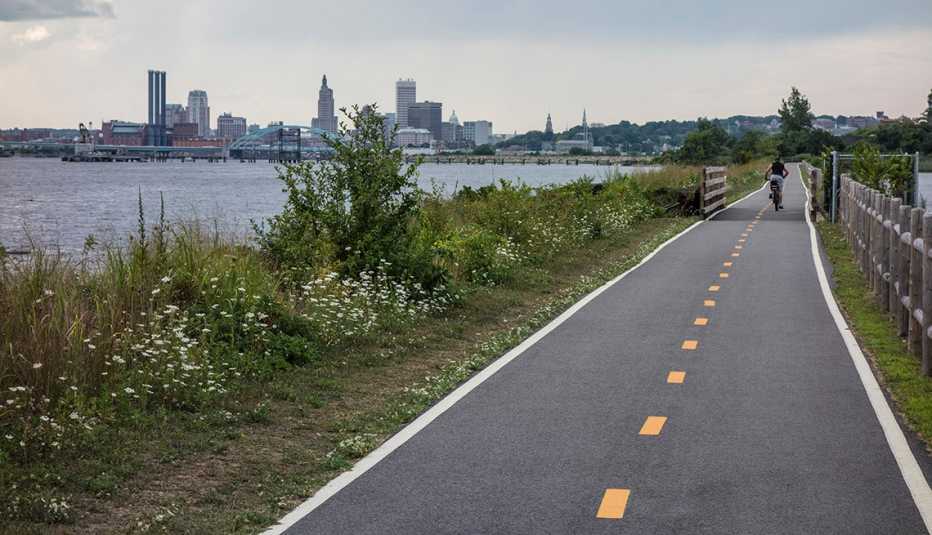AARP Hearing Center


With the help of community partners, including AARP Rhode Island, the Rhode Island Department of Transportation (RIDOT) has published Rhode Island’s Complete Streets Action Plan, a report on the progress the transportation agency has made toward designing more user-friendly streets since the enactment of the General Assembly's 2012 Complete Streets Legislation.
Read the Report
The guiding principle of the law states: "These features of Complete Streets design shall include, but not be limited to: sidewalks, paved shoulders suitable for use by bicyclists, lane striping, bicycle lanes, share the road signage, road diets, roundabouts, crosswalks, pedestrian signals, bus pull outs, raised crosswalks, and traffic calming measures."
In addition to showcasing new and improved street and road systems for several Rhode Island cities and towns, RIDOT’s report cites community involvement as the key to its success. Through ongoing coordination with RIDOT and community partners, smart growth advocates, municipalities and the Federal Highway Administration, AARP Rhode Island plays a key role in propelling Complete Streets principles in Rhode Island.
"AARP Rhode Island works with volunteers as well as state and local officials to promote Complete Streets and Livable Communities,” says AARP Rhode Island State Director Kathleen Connell.
"When people talk about 'aging in place,' it's important to understand it refers to much more than simply staying in the family home for as long as practical. The 'place' really matters," Connell adds. "Livable Communities," Connell added, "represent environments for active and healthy activity, such as walking and biking. Residents should have a voice in transportation infrastructure changes to ensure that street and roadway designs take into account safety, open space, lighting and other factors that match the needs of users of all ages and abilities."
As of the report's publication in February 2015, the state of Rhode Island had, as a result of Complete Streets principles:*
- Constructed 10 modern roundabouts
- Added more than 5 miles of new bicycle lanes
- Improved more than 30 intersections
- Added more than 5 miles of new trails and shared-use paths
- Enhanced 5 pedestrian crossings
- Marked more than 20 miles of roadways with shared-lane markings
- Implemented more than 10 road diets
- Conducted more than 50 Road Safety Audits
A Brief (But Complete) Definition of Complete Streets
The Complete Streets initiative calls for America's streets to be safe and convenient for travel by automobile, foot, bicycle and transit -- regardless of a person's age or ability. Complete Streets are designed to balance the safety and access needs of all road users. Streets designed with these principles in mind help create a more multi-modal street network and communities that are more livable.
Videos of Livability Work in Rhode Island
John Martin is the communications director of AARP Rhode Island.
Page published February 2015


























































